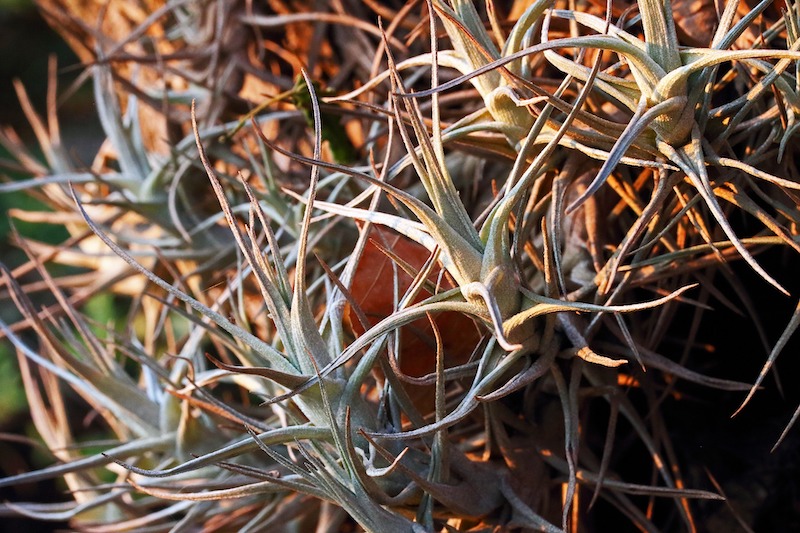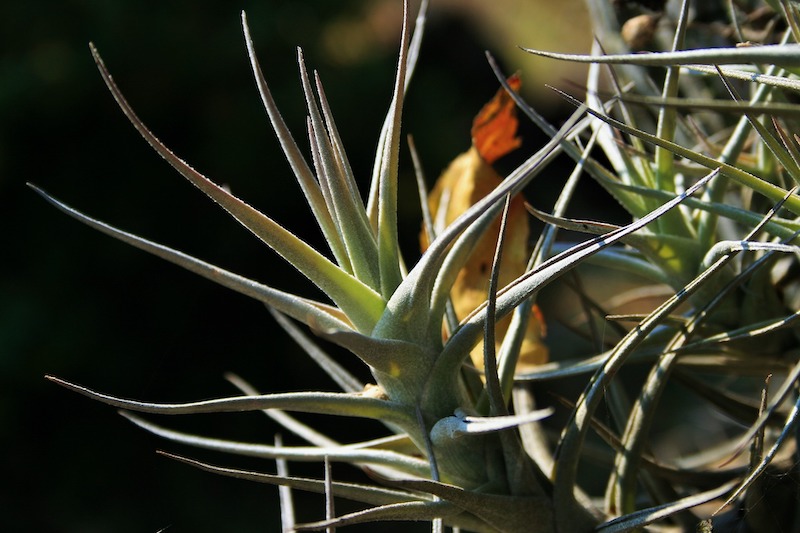Air Plants are typically grown as a houseplant in most of the USDA growing zones and are only fully hardy in zones 10-12, which include Florida, Alabama, Mississippi, Georgia, and Texas. The warm summer months are a great time to bring Air Plants outside to take advantage of natural light levels and humidity. Air Plants require little care when used on a deck, patio, or porch, or tucked into the branches of deciduous trees for a summer vacation.

When To Put Air Plants Outside
The suitable temperature range for Tillandsia is 50-90 degrees F, or 10-32 degrees C. While that is a broad range, cold nighttime temperatures will damage these tropical and desert plants. Early in the spring, Air Plants need to be slowly acclimated to the brighter light levels outdoors. Place the plants in a fully shaded spot for 5-10 days before moving them to a partially sunny spot that has indirect light or full shade during the hottest part of the day. Dappled sunlight under a pergola or from trees is ideal.

When To Bring Air Plants Indoors
Late in the summer when the nighttime temperatures begin to fall below 55 F (12 C), prepare Air Plants for going back indoors for the cold months. Placing the plants in a protected spot that has shade for one week is a good way to ensure that there are no pests or diseases that need to be dealt with. Fortunately, Air Plants have few pests or diseases that bother them.
Caring For Air Plants Outdoors
Air Plants will require a shaded location when grown outdoors. Bright direct light will fade and scorch their leaves and can cause death if the plant is exposed to it for too long. The dappled shade of a pergola, arbor, or deciduous tree is ideal and will provide protection during the hottest part of the day. Watering may need to be increased to 2-3 times a week if humidity levels are low in your gardening zone. A daily misting with filtered or rain water will help to increase humidity levels around the plant, as will placing Air Plants among other plants.
Heavy rainfalls or summer thunderstorms may be difficult for Air Plants to withstand. Move the plants to a sheltered location when downpours, hail, or thunderstorms are predicted. Hail can seriously damage the leaves, while heavy or prolonged rain could result in the rotting of the growing crown.
 |
Author Robbin Small - Published 3-22-2023 |
